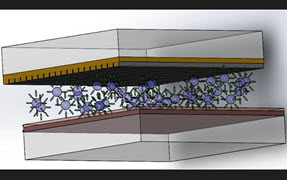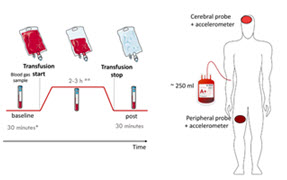Metasurfaces Hold the Answer

Slide from Mohammadreza Khorasaninejad presentation "Flat Optics with Metasurfaces: Beyond Refractive and Diffractive Optics"
One major engineering challenge for virtual and augmented reality devices is to create compact, lightweight optics. Lenses with metasurfaces may hold the answer, as Reza Khorasaninejad, the CTO of California-based startup Brelyon, presented at SPIE Photonics West. These nano-scale structures, fabricated on lens surfaces, allow the engineer to have precise control over incoming light -- conventionally only possible with thick optics.
Khorasaninejad's presentation, titled "Advanced Digital Optics Using Metasurfaces," centered on research he conducted at Harvard University with professor Federico Capasso. He described metasurfaces they fabricated on flat lenses. These structures allow the engineer to control the phase, polarization, and dispersion of various colors of light. These are all necessary for AR and VR devices.
In particular, Khorasaninejad discussed how metasurfaces solve color dispersion. Conventional lenses bend red, green, and blue light at slightly different angles, which creates a distorted image for the viewer. Khorasaninejad displayed some tests from a metasurfaced lens that his team worked with. They could engineer metasurfaces on a lens to bend all three colors at the same angle.
In addition, different colors of light are transmitted through a conventional lens at different efficiencies, leading to unnaturally tinted images. Khorasaninejad's metasurfaces allowed the colors to pass at roughly the same efficiency.
"This is the first time we've showed lenses that can work across the visible range," said Khorasaninejad of the work.
To fabricate the metasurfaces, they used a technique called atomic layer deposition to lay nanostructures made of titanium dioxide. As Khorasaninejad showed in a picture, these structures can be as closely spaced as seven nanometers. This should allow researchers to customize metasurfaces for many specific purposes.
However, in response to a question at the end of the talk, Khorasaninejad said that metasurfaces are not yet cost-effective to manufacture. While their production can be scaled commercial fabrication methods, they are still very expensive, he said.
Sophia Chen contributes to Wired, Science, and Physics Girl. She is a freelance science writer based in Tucson, Arizona.
Related SPIE content:
Dielectric Metasurfaces for Distance Measurements and 3D Imaging
Federico Capasso: Flat optics: from high-performance metalenses to structured light
Federico Capasso: Metasurface flat optics: Unifying semiconductor manufacturing and lens making
Mohammadreza Khorasaninejad: Flat Optics with Metasurfaces: Beyond Refractive and Diffractive Optics
| Enjoy this article? Get similar news in your inbox |
|



